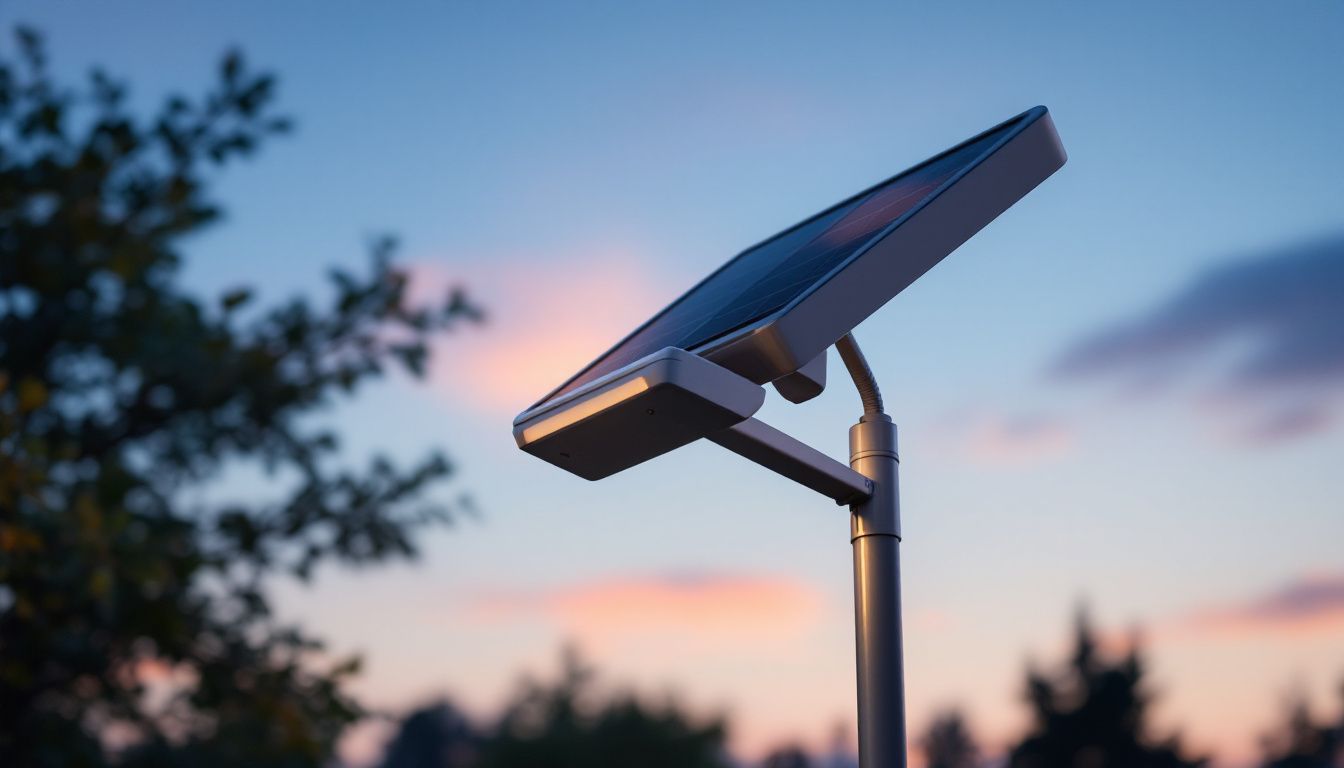

In the realm of outdoor lighting, the choice of lighting poles plays a crucial role in ensuring effective illumination and aesthetic appeal. For lighting contractors, understanding the various aspects of lighting poles is essential for successful project execution. This article provides key tips that can enhance the decision-making process when selecting and installing lighting poles.
Lighting poles serve as the backbone of outdoor lighting systems, supporting fixtures that illuminate streets, parking lots, parks, and other public spaces. The right pole not only supports the lighting fixture but also contributes to the overall design and functionality of the lighting system. They play a crucial role in enhancing safety and visibility, making them an essential consideration in urban planning and development.
When selecting lighting poles, contractors must consider factors such as material, height, and design. Each of these elements influences the performance and aesthetics of the lighting installation. Additionally, the choice of lighting technology, such as LED versus traditional incandescent bulbs, can also impact the pole’s design and functionality, as different fixtures may require specific mounting solutions or power considerations.
Lighting poles come in various types, each designed for specific applications. Common materials include aluminum, steel, and fiberglass, each offering unique benefits. Aluminum poles are lightweight and resistant to corrosion, making them ideal for coastal areas. Steel poles, on the other hand, provide strength and durability, suitable for high-traffic environments. Fiberglass poles are often used in areas prone to severe weather due to their resilience. Furthermore, the choice of material can also affect maintenance requirements, with some materials necessitating more frequent inspections and upkeep than others.
Height is another critical factor. Poles typically range from 10 to 40 feet, and the appropriate height depends on the lighting application. For instance, street lighting often requires taller poles to ensure adequate coverage, while decorative lighting in parks may use shorter poles to create a more intimate atmosphere. Additionally, the spacing of the poles is vital; too far apart can lead to dark spots, while too close can create excessive glare, making it essential to find the right balance for optimal illumination.
The design of the lighting pole should complement the surrounding environment. Aesthetic appeal is particularly important in urban settings where lighting poles contribute to the overall landscape. Contractors should consider the architectural style of nearby buildings and the overall theme of the area when selecting pole designs. This consideration not only enhances the visual coherence of the space but can also influence how the public interacts with the area, promoting a sense of place and community.
Moreover, decorative poles can enhance the visual appeal of public spaces. Options such as ornamental bases, unique finishes, and integrated features like banners or flower baskets can transform a standard pole into a design element that adds character to the environment. Additionally, the integration of smart technology into lighting poles, such as sensors for adaptive lighting or Wi-Fi hotspots, can further elevate their functionality, making them not just sources of light but also hubs of connectivity and innovation in urban design.
Proper installation of lighting poles is vital for ensuring safety, longevity, and optimal performance. Contractors must adhere to industry standards and local regulations to achieve successful installations. Neglecting these practices can lead to costly repairs and potential hazards, making it imperative to follow established guidelines throughout the installation process.
Before installation, site assessments should be conducted to determine the best locations for poles. Factors such as existing infrastructure, soil conditions, and potential obstructions must be considered. Additionally, it is essential to plan for the necessary electrical connections and ensure that the poles are positioned to provide adequate lighting coverage. This planning phase can also involve consulting with local authorities to understand any zoning laws or restrictions that may affect pole placement.
Site preparation is a critical step in the installation process. This includes clearing the area of debris, ensuring proper drainage, and preparing the ground for pole placement. Depending on the pole type and height, excavation may be required to create a stable foundation. It is advisable to conduct soil tests to assess the load-bearing capacity, which can inform decisions on the type of foundation needed.
Contractors should also consider the use of concrete footings. A well-constructed footing provides stability and prevents the pole from leaning or toppling over time. The depth and diameter of the footing should be determined based on the pole height and local wind load requirements. Furthermore, incorporating reinforcement bars into the concrete can enhance the durability of the footings, especially in areas prone to extreme weather conditions.
Electrical connections are a fundamental aspect of lighting pole installation. Contractors must ensure that all wiring is done according to local codes and standards. This includes using appropriate conduit, connectors, and junction boxes to protect the wiring from environmental factors. Selecting the right gauge of wire is also important, as it affects both the efficiency of the lighting system and the safety of the installation.
Additionally, it is crucial to test all electrical connections before finalizing the installation. This step ensures that the lighting fixtures operate correctly and that there are no safety hazards. Proper grounding of the poles is also essential to prevent electrical shock and equipment damage. Implementing surge protection devices can further safeguard the system against voltage spikes caused by lightning or other electrical disturbances, ensuring a reliable lighting solution for years to come.
Once lighting poles are installed, ongoing maintenance is necessary to ensure their longevity and functionality. Regular inspections can help identify potential issues before they become significant problems.
Maintenance tasks may include cleaning the poles, checking for signs of corrosion, and ensuring that the lighting fixtures are functioning correctly. Contractors should establish a maintenance schedule based on the environmental conditions and the materials used in the poles.
Corrosion is a common issue that can significantly impact the lifespan of lighting poles, particularly those made from metal. To prevent corrosion, contractors should consider using poles with protective coatings or finishes. These treatments can help shield the metal from moisture and environmental pollutants.
In coastal areas, where salt exposure is prevalent, selecting materials specifically designed to resist corrosion is essential. Regular inspections and maintenance can help identify any signs of corrosion early, allowing for timely repairs or replacements.
The lighting fixtures themselves also require regular maintenance. This includes cleaning lenses to ensure optimal light output and replacing burnt-out bulbs promptly. Contractors should educate clients on the importance of fixture maintenance to prolong the effectiveness of the lighting system.
Additionally, upgrading fixtures to more energy-efficient options can enhance the overall performance of the lighting system. LED fixtures, for example, offer longer lifespans and lower energy consumption, making them an attractive option for many contractors and clients.
Safety is paramount in all aspects of lighting pole installation and maintenance. Contractors must adhere to safety regulations and best practices to protect themselves and the public.
During installation, proper safety gear should be worn, including helmets, gloves, and high-visibility clothing. Additionally, contractors should be aware of their surroundings, especially when working near traffic or in crowded areas.
When dealing with electrical systems, it is crucial to follow all safety protocols. This includes de-energizing circuits before beginning any electrical work and using insulated tools. Contractors should also be aware of potential hazards, such as overhead power lines, and take necessary precautions to avoid accidents.
Training and education on electrical safety can significantly reduce the risk of incidents during installation and maintenance. Contractors should ensure that all team members are knowledgeable about safe practices and emergency procedures.
Public safety should also be a priority during the installation process. Contractors should implement traffic control measures when working near roadways, including cones, barriers, and signage to alert drivers and pedestrians. This not only protects workers but also minimizes disruptions to the public.
Additionally, clear communication with local authorities can help coordinate efforts and ensure that all necessary permits and approvals are in place before beginning work.
The choice of lighting fixtures is as important as the selection of poles. The right fixtures can enhance the functionality and aesthetics of the lighting system, making it essential for contractors to stay informed about the latest technologies and trends.
Considerations such as lumens, color temperature, and beam angle should guide the selection process. Different applications may require specific lighting characteristics to achieve optimal results.
energy efficiency is a growing concern for many clients, and contractors should be prepared to offer sustainable lighting solutions. LED fixtures are a popular choice due to their low energy consumption and long lifespan. By recommending energy-efficient options, contractors can help clients reduce operational costs and minimize their environmental impact.
Additionally, incorporating smart lighting technologies can enhance energy efficiency. Features such as motion sensors and dimming capabilities allow for adaptive lighting that responds to real-time conditions, further optimizing energy use.
Aesthetics also play a significant role in fixture selection. The design of the fixtures should align with the overall theme of the project and complement the lighting poles. Options range from sleek modern designs to more traditional styles, allowing contractors to tailor their recommendations to the client’s vision.
Furthermore, custom fixtures can be developed for unique projects, providing an opportunity for contractors to showcase their creativity and meet specific client needs.
In summary, lighting poles are a critical component of outdoor lighting systems, and understanding their various aspects can significantly impact the success of lighting projects. From selecting the right materials and designs to ensuring proper installation and maintenance, lighting contractors must be well-versed in all facets of lighting pole usage.
By prioritizing safety, energy efficiency, and aesthetics, contractors can deliver high-quality lighting solutions that meet the needs of their clients while enhancing public spaces. Staying informed about industry trends and best practices will further empower contractors to excel in their projects and build a reputation for excellence in the lighting industry.
Ready to elevate your lighting projects with the best in spec-grade lighting poles and fixtures? Look no further than LumenWholesale. Our commitment to quality and affordability ensures that you have access to the finest lighting products at wholesale prices, without the burden of inflated markups. With LumenWholesale, you can confidently meet the highest industry standards while enjoying the convenience of free shipping on bulk orders. Don’t compromise on quality or cost—choose LumenWholesale for your lighting needs and experience the ultimate in value and convenience. Discover our extensive selection and start transforming your lighting projects today by visiting Wholesale Lighting at the Best Value.

Discover why solar exterior lighting with motion sensors is revolutionizing the industry.

Discover the ins and outs of solar light poles with our comprehensive guide tailored for lighting contractors.

Discover why purchasing strip lights in bulk from local distributors might not be the best choice.

Discover how LED under-counter lighting is revolutionizing the projects of lighting contractors.
Get notified when NEW deals are released.
Optimize your budget with wholesale discounts.
Only top-quality, specification-grade lighting products.
No additional costs at checkout - what you see is what you pay.
We understand the unique needs of contractors.